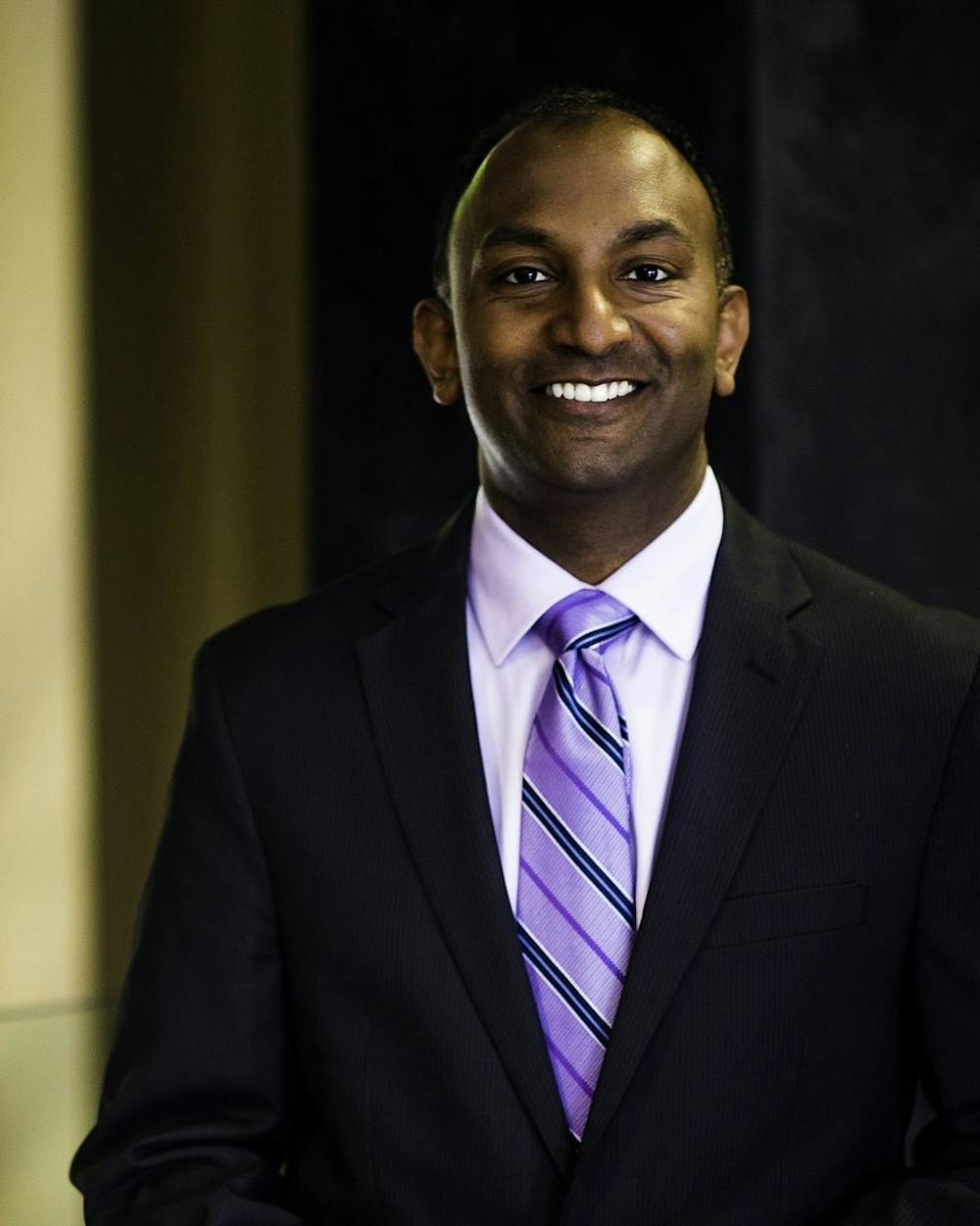The International Studies Leadership Council (ISLC) hosted the second event in its Summer Series on Race, “Racial Divides in Baltimore,” on July 16. Thiru Vignarajah, the former deputy attorney general of Maryland and candidate in Baltimore’s recent mayoral election, spoke at the event. Vignarajah, a Baltimore native, discussed policing, education, public transportation reform and marijuana legalization as ways to mitigate the impact of systemic racism in Baltimore City.
Rising senior and co-moderator of the event, Anna Sargeantson, discussed ISLC’s intentions behind the summer series in an email to The News-Letter.
“It is a critical part of our mission in the ISLC to provide students with the ability to interact with individuals who are on the ground working on important issues,” she wrote. “We wanted those who attended this event to come away with a clearer understanding and sensitivity towards the racism that goes on in our very backyard.”
Vignarajah noted that, despite his love for the city, Baltimore needs to address its deep-rooted racism.
“Baltimore is so much more a checkerboard than a city,” he said. “You see it in the segregated classrooms of our schools, you see it in how we approach violent crime and criminal justice, you see it in public health, in jobs, in opportunities — you see it everywhere.”
Vignarajah said that, for Hopkins students, the most effective way to help is to stick around after graduation.
“For just a couple of years, give a city that desperately needs your talent, your time, your commitment and your idealism a chance. We don’t have enough of it,” he said.
He summed up the racial divide he sees in Baltimore through an anecdote about three murders that occurred in 2018. One of the murders, that of an affluent white man in Federal Hill, received wide media attention. His murderer was arrested within a week and over 400 people attended a vigil honoring his life.
The other two were of Black men in less affluent areas. Those murders remain unsolved two years later and their vigils were scarcely attended.
Sargeantson noted that she found this anecdote extremely powerful in investigating the root causes of inequality in Baltimore.
“I would imagine this story lingered in the minds of all attendees as it did for me,” she wrote. “Why is it that this community seems to value some lives over others?”
Vignarajah said that his vision for an equitable Baltimore requires police reform, not abolition. He wants to recruit Baltimore natives to serve on a force that is trained in de-escalation strategies, implicit bias and diagnosing and addressing mental health challenges. He noted that his strategy comes from conversations he has had with Black residents from less affluent areas of the city.
“A lot of these folks remember the days of excessive force and abuse, the shootings, the killings, of unarmed Black men, predominantly — nobody wants that,” he said. “But they also remember the days when police officers worked with their communities to help keep their children and their parents safe.”
He also spoke about the Johns Hopkins Police Department (JHPD). While he understood the concerns of those who have spoken against the department, he warned students that the private security Hopkins and many other entities in Baltimore already employ can be just as dangerous due to a lack of accountability.
“For those of us who believe that body cameras are a really important source of accountability, private security officers are not allowed to have body cameras,” he said.
Vignarajah also pointed to integrating public schools as a way to lessen the racial divide. He noted that three of the best public high schools in Baltimore have some degree of racial diversity. Most other high schools have majority Black populations.
“That is the tale of public education in Baltimore,” he said. “It is not the promise of Brown v. Board, which recognized that if children in public schools are separated by race, their hearts and minds will be affected in ways that are unlikely to ever be undone.”
Not only is education segregated in Baltimore, but so are housing and social circles. Vignarajah explained that the public transportation routes in Baltimore support that divide.
“If you want to get from the very rich neighborhoods in Baltimore to Federal Hill, or back, you can take the [Charm City] Circulator, a free bus, right down the most affluent corridor in the city,” he said. “But if you want to get from West Baltimore, from Edmondson Village, to downtown to your job then back home to your family, you’ve got to pay $1.85 each way. That is inconceivable.”
Vignarajah supported using a circular bus route to integrate the city.
“The virtue of a circle in breaking up redlining is that redlining was done in horizontal and vertical ways,” he said. “With a circular route, people of different backgrounds would be getting on the same buses to go around Baltimore City.”
Rising junior and co-moderator Celia Lane reflected on the role Hopkins students can play in achieving Vignarajah’s vision of an equitable Baltimore.
“As students it can be easy to get stuck in the 'Hopkins bubble' and forget that we are all also residents of the Baltimore community,“ she said. “We need to appreciate the city's history and our own institutional history with racism and think critically about the policies that are debated at a national and institutional level.”





